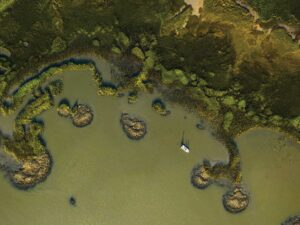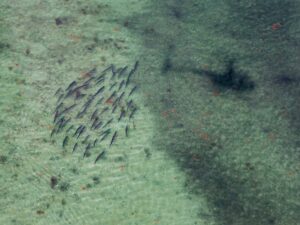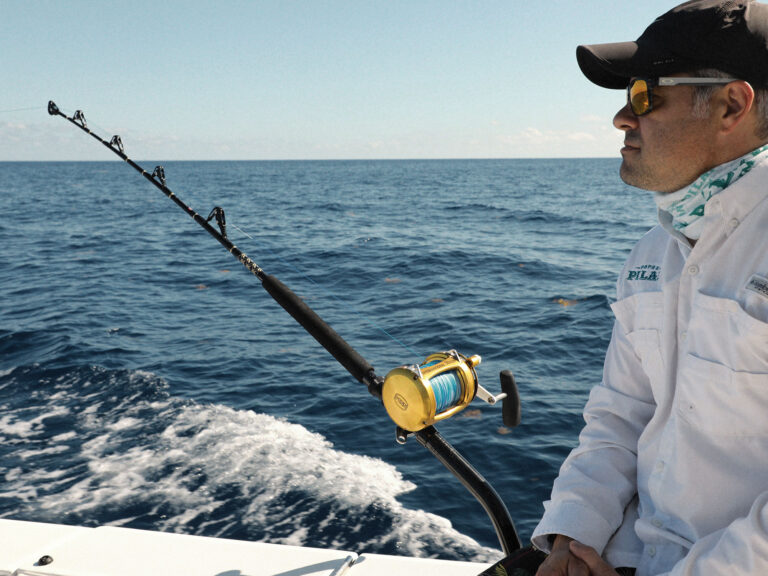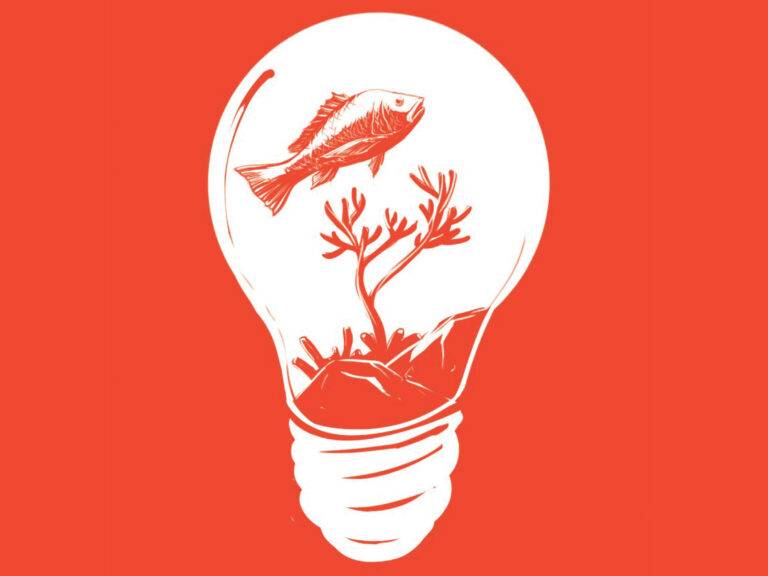
Wanted: Blackfin Tuna
Head south to tangle with blackfins off the Florida coast.
April and May are prime months for catching big blackfin tuna (Thunnus atlanticus) off South Florida and the Keys, with numerous fish in the 20-plus-pound class.
Off Miami, big blackfins engulf goggle-eyes, pilchards, herring, pinfish and other live baits dangling from fishing kites, especially those positioned between 50 and 150 feet deep. These blackfins mix with the spring run of sailfish, favoring color changes, rips, wrecks and reefs between 90 and 300 feet. Spinning and conventional reels with 20-pound-mono main lines are perfect here.
The humps and bars off the Florida Keys are rich with blackfins. Power-drifting along their up-current sides and live-chumming with pilchards score fast limits. However, drifting across the humps with a live pinfish or a fresh squid, one positioned around 50 to 80 feet deep, and one between 150 and 200 feet down, will yield some of the bigger specimens. Don’t overgun terminal tackle; keep with 30- and 40-pound fluorocarbon leaders and small inline circle hooks, 2/0 to 4/0, based on bait size.
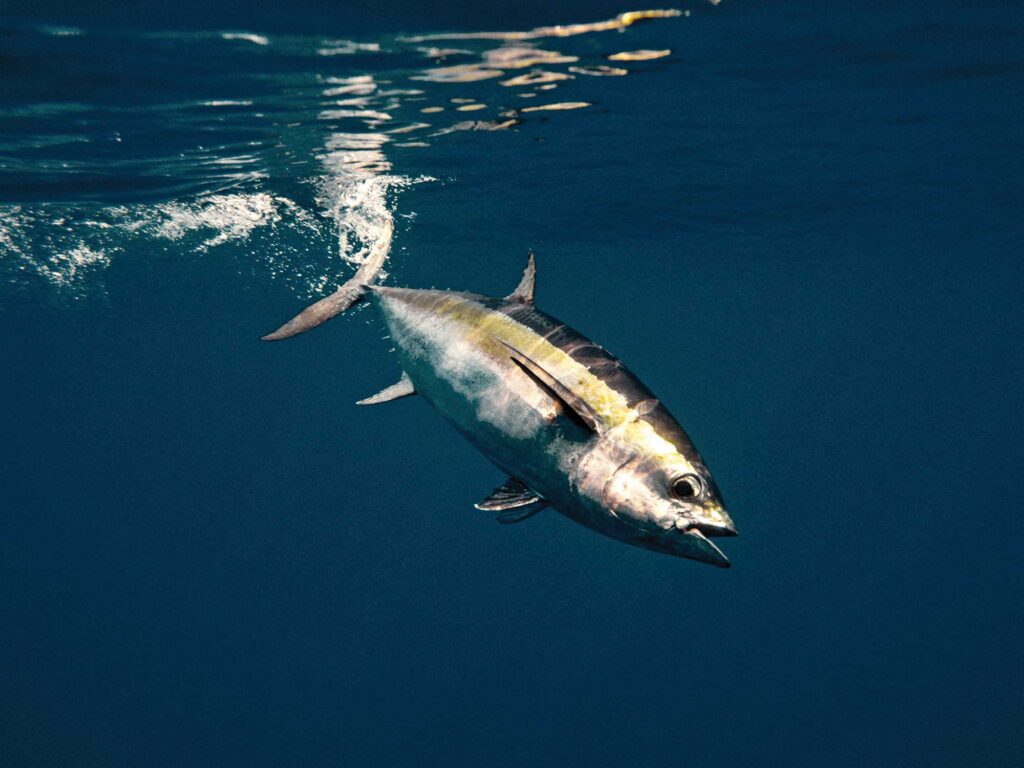
The easiest way to score blackfins at the humps and on deep wrecks is by trolling swimming plugs the likes of a Rapala CD Mag 14. Rig these with 30-pound fluorocarbon leader and troll parallel to their up-current sides around 10 mph. Marking blackfins on the sonar and jigging with flutter-style irons rigged with 30-pound fluorocarbon leaders is another simple means of catching them.
Key West offers access to shrimp boats in the Gulf. In April and May, big blackfins forage on the bycatch culled from shrimpers. Super-early morning starts are a must, and long hauls often the norm. However, if you find a shrimper dumping bycatch, there should be blackfins and bonito in feeding frenzies. Broadcast a scoop of shrimp-boat bycatch, followed by a hook bait of the same. Frenzied blackfins can even be fooled on top with topwater plugs and flies matched to the size and colors of the bycatch. Light spin tackle with 12- or 20-pound line is perfect for casting and getting the most fun out of fighting these fish.
As for other periods, blackfins are on the Florida Keys humps throughout summer, though not as consistently as during the spring and fall. They’re caught incidentally when live-baiting or trolling around deep wrecks and bars, more so by jigging these structures around sunrise. However, come October and November, they’ll begin returning in numbers to the humps, bars and wrecks throughout the Florida Keys, just in time to please the tourists. —George Poveromo

Canyon Bigeyes
These deepwater creatures of the canyons will test your mettle.
In the world of hard-charging gamefish, the bigeye tuna (Thunnus obesus) has few peers. Growing to more than 300 pounds, fighting one can be a knock-down, drag-out fight that will stress tackle and test your stamina. Bigeyes visit the canyons from southern New England to the mid-Atlantic yearly, usually arriving in May and staying well into the fall. Their feeding patterns can change during the season, but one major food source remains the same—Illex illecebrosus, northern shortfin squid.
Bigeyes have more in common with swordfish than other tuna. Shared traits include excellent low-light vision, the ability to augment their body temperature when feeding in the cold water of the deep, and a vertical lifestyle that keys around the movements of the squid they predate upon. Bigeyes will make more frequent trips to the surface than their billed companion. When they are near the surface, they will also feed on a variety of forage fish. That’s when anglers target them.
Squid exhibit a daily migration, going deep during daylight hours and then shallow as darkness approaches, often holding near the surface throughout the night—and bigeyes will be hot on their tails. Eyeballs, as they are sometimes called, usually attack in wolf packs, which means multiple hookups are common when trolling. The most productive hours for trolling occur early in the morning—starting well before first light—and again as the sun sets.
A mixed pattern of spreader bars and rigged ballyhoo under heavy Joe Shutes-style skirts is a top choice when targeting bigeyes. Running weighted dredges can attract bigeyes into your pattern, even if they are holding 100 or more feet down. Keep your trolling baits and lures well below the surface, and stick with dark colors for skirts over ballyhoo, lures and bars early and late in the day.
According to Capt. Mark DeBlasio, a renowned bigeye specialist, evening bites are often the best as hungry bigeyes follow the squid to the surface. He recommends trolling well after dark using weighted naked and skirted large ballyhoo. Glow lures are not recommended because the bigeye’s excellent low-light vision allows them to see your presentation without artificial enhancement.
If you encounter squid near the surface while night chunking, catch and live-line some, as they will take both bigeye and yellowfin. Be sure to fish deep lines above and below the thermocline for swordfish too. —Gary Caputi
Read Next: Popping for Tuna

Gulf Yellowfins
The Gulf of Mexico offers a bounty of tuna species, including yellowfin, blackfin and bigeye.
From Key West to South Padre, there’s ample options for tuna in the expansive Gulf of Mexico. Skipjack and blackfins are accessible closer to shore, while migratory giant bluefins routinely wreck heavy tackle aboard boats trolling the Stream. But for nearly year-round offshore action, yellowfins (Thunnus albacares) and occasionally bigeyes share the spotlight, especially during the summer tournament season.
The Midnight Lump, a salt dome about 40 miles southwest off Louisiana’s coast, offers shots at hefty yellowfins during winter and early spring. Rising to within 200 feet of the surface, the lump is a baitfish magnet. Chunking and live-baiting are the favored tactics here. As the water warms and offshore rips and eddies form, soaking bridled skipjack, blue runners and other baits on marlin tackle produces prize-winning catches.
The top zones center around the numerous energy rigs and floating drill platforms in the central and western Gulf. Underwater lights at night attract flying fish, which can be netted and redeployed for almost-certain hookups. The autumn shrimp run is the perfect time to chunk behind the trawlers as tuna scarf up the discarded bycatch. For a faster pace, tossing large poppers on heavy spin tackle to busting schools of flying fish in open water will definitely ramp up the adrenalin.
Tuna hunters in the Florida Panhandle also enjoy consistent success. The FAD system off Destin, the Spur and the pipeline area in 700- to 800-foot depths are good places to target. Capt. Adam Peeples (oneshotcharters.com) routinely puts his clients on chunky yellowfin and bigeye tuna.
“It all depends on the water temperatures,” Peeples explains. “Once it drops to 70 and below, the fish fade off. But day in, day out, live bait is the key as long as it’s in good shape and frisky.” —Capt. Dave Lear

Left Coast Albacore
If you want to experience pacific longfin action, you best head north.
Pacific albacore (Thunnus alalonga) had at one time sustained the sport-fishing fleet in San Diego. But for more than 20 years of offshore summer seasons, the northward-migrating longfin tuna have bypassed the waters off SoCal. To catch albies now, head to the tempestuous waters off northern California and the Pacific Northwest.
Varying from 5-pounders to 50-pound-class fish, albacore prove eager biters, spirited fighters and fine table fare. These white-meat tuna are the coveted chicken of the sea.
Albacore haunt purple-blue water and temperature breaks—changes of 2 to 5 degrees along which they can find and gorge on forage species, such as anchovies and sauries. Breaks often occur along the continental shelf, submerged canyons, ridges and seamounts.
Some key ports to launch an albie hunt in California include Morro Bay, Santa Cruz, Bodega Bay and Crescent City. In Oregon, albie hotspots include Coos Bay and Garibaldi. In Washington state, many albacore trips originate in Westport. On Vancouver Island, the village of Kyuquot serves many of Canada’s longfin aficionados.
Albacore like water temperatures from 59 to 62 degrees F, which can occur anywhere along the coast between June and October. While some anglers prospect, many wait until a concentration of albies is located before committing to a trip as far as 60 miles offshore, and only when calm weather conditions permit.
Traditionally, anglers troll feather jigs, cedar plugs and large deep-diving lures at about 7 knots to find albacore, in addition to searching for birds, jumping bait, temperature breaks and sometimes leaping albacore. When a fish is hooked, the school often follows it to the boat, where anglers catch fish with live bait such as sardines. Tossing out live baits helps keep the school around the vessel. In areas where no live bait is available, anglers continue to troll to catch fish. —Jim Hendricks
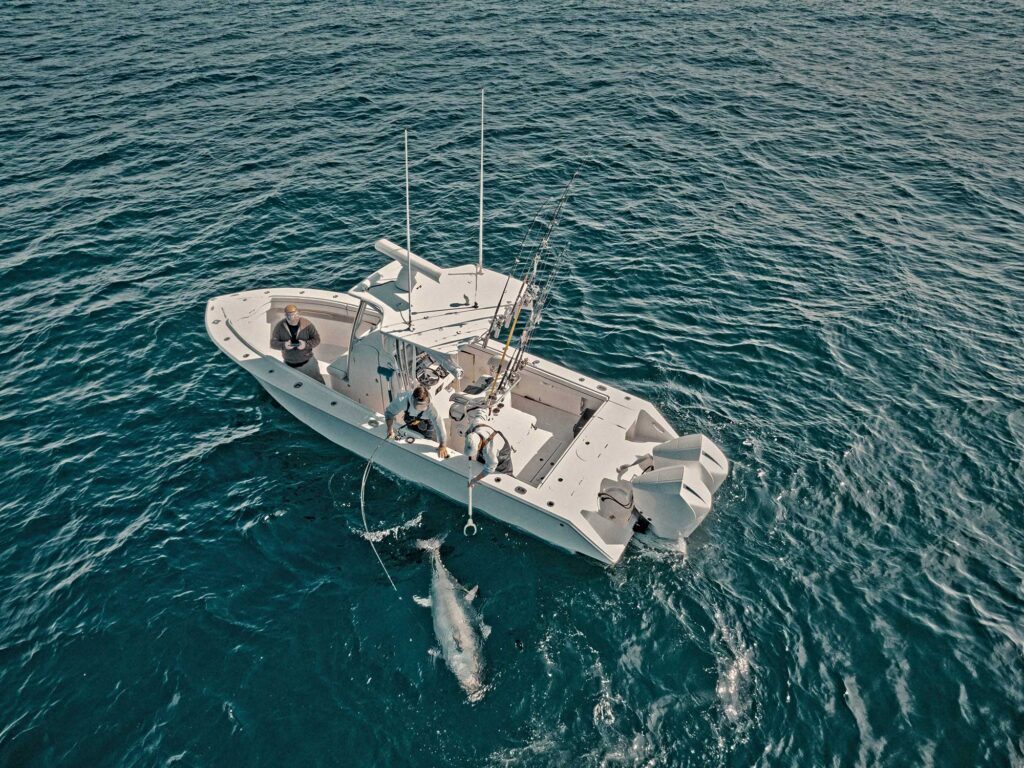
Bluefin Bonanza
From northern waters to North Carolina, anglers anxiously await the arrival of bluefins.
Atlantic bluefin tuna, Thunnus thynnus, can be found along the Eastern Seaboard from Nova Scotia to the Gulf of Mexico, give or take. With a long life span of 20 years or more, they can grow up to 2,000 pounds. This, and their excellence as table fare, makes them an important commercial and recreation fish, with die-hard anglers chasing giants using a variety of methods.
You can expect bluefins to make a showing off New England around June and stick around through December or later, depending on water temperature. They move southward through their range as winter progresses, showing up rather predictably off the North Carolina coast in November. By late winter and early spring, the tuna move to the edge of the Gulf Stream off Cape Hatteras.
The most common way to target bluefin tuna is trolling large ballyhoo under a heavy skirt at 3 to 4 knots, typically with 80- and 130-pound rods. The trick is to drop the lures up to 100 yards behind the boat. Slow-troll the spread through schools of menhaden and sand eels found anywhere from the beach to 20 miles out.
Anglers also chase giant bluefins with topwater plugs and vertical jigs. To locate tuna, watch the fish-finder screen for bluefin marks and search the surface of the water for tuna foaming on bait. Favored jigs are the Hogy Harness Jig, Shimano Ocea Sardine Waver and Nomad Design Streaker. Top topwaters include the Shimano Ocea Bomb Dip Flash Boost, Yo-Zuri Mag Popper and Nomad Chug Norris. But be careful what you wish for because battling a bluefin on a spinner can be a test of endurance.
Luckily, bluefin tuna have a low rate of release mortality. In fact, strict regulations inspire most recreational anglers to release giant bluefins. For me, bringing a quarter-ton bluefin boatside, controlling it with the leader, and retrieving the lure before releasing the giant to swim back into the deep is even more enjoyable than fresh sashimi and poke bowls. —Ric Burnley


